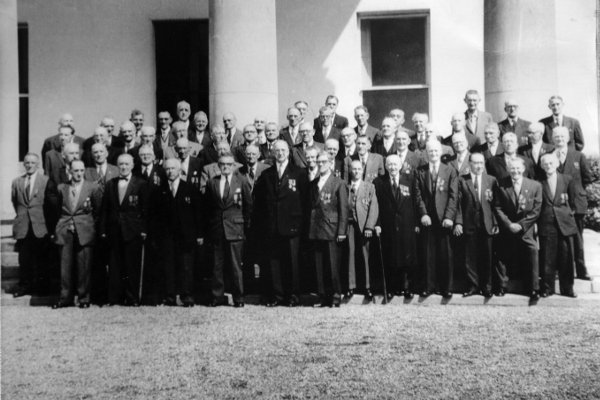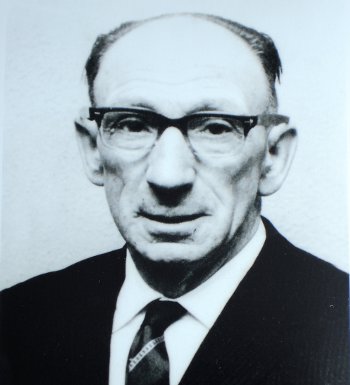ALMOST 100 years have passed since Ireland began its struggle for independence – and few remain to tell the tale.
Stories have been passed down through the generations keeping Ireland’s history alive, both at home and among the Diaspora around the world.
One of those who is passionate about keeping the story alive is Uxbridge resident Maria Casey.
Mrs Casey is the last remaining child of Cornelius ‘Con’ Ryan, one of the rebels who fought for independence alongside Eamon de Valera in Boland’s Mill in Dublin during the Easter Rising.
Today she dreams of going back to Ireland in 2016 to commemorate the centenary and honour her late father’s memory.
“He never really spoke to us about his involvement, but we were very young,” the 87-year-old recalls.
“My brother Eamon died last September and up until then the plan was that we would both go to the celebrations in Dublin but now it’s down to me.”
Though Con Ryan kept much of the events of 1916 from his family, the York Street native was an extremely proud Irishman.
Born on April 9, 1891, he was a young man when the independence movement began to gain momentum and he had just turned 25 when the Easter Rising began.
He was a newlywed and had yet to start his family – but he was determined to play his part in making Ireland an independent country.
History aficionados will know that much of the attention was centred on O’Connell Street’s GPO but rebels also took up stations at Boland’s Mill, the Four Courts, Jacob’s Biscuit Factory and the South Dublin Union hospital complex in the capital.
The Ireland of 1916 was a turbulent place, with growing republican sentiment on the streets.
With Britain at war with Germany, the republican movement grew in momentum and plans were put in place for a revolution.
Though he never fully divulged his involvement, Con Ryan was one of the many Irishmen and women who signed up to help their country break free from Britain.
He was stationed in Boland’s Mill – a place which would become a big part of his life.
“He worked in Boland’s Mill for 45 years after,” Mrs Casey said. “They used to call him a ‘silent worker’, he was always true to his men.”
Conn Ryan met his future wife when they were both working in Jacob’s biscuit factory in Dublin and they soon fell in love.
It wasn’t until after the Rising, in 1918, that they welcomed their first child and went on to have nine more – with a young Maria arriving in 1928.
At this point, the War of Independence and the Irish Civil War had already taken place, and the Irish Free State had been established.
But it would be 21 more years before the official creation of the Irish Republic.
By her own admission Maria Casey had an idyllic childhood and says her parents provided the family with everything they could have wanted.
“We never wanted for anything,” she said. “I remember so many other children didn’t have shoes and we did – but as I always said, my dad worked very hard for our shoes. He would sometimes come home and say ‘if everyone’s ready we’ll go to see a panto’ and surprise us all and take us to the Gaiety or the Olympia.”
Mrs Casey was just 20 when in 1948 she decided to come to Britain for work.
Ireland’s head of state would officially be Britain’s King for just one more year after this.
In 1949 Ireland was officially recognised as an independent state – with leaders refusing to acknowledge the British King as head of state, meaning Ireland lost its place in the Commonwealth.
Jobs were thin on the ground in Dublin, so Maria Casey first settled in Birmingham, before joining her sister Sarah in London.
It was here that she met the love of her life, Patrick Casey. And she is quick off the mark when asked about her late husband’s background.
“Me, marry an Englishman?” she joked. “Patrick was from Westport in Co. Mayo and he was an absolute gentleman.”
The pair married in 1952 and enjoyed a happy marriage – until Patrick Casey succumbed to cancer in 1977.
“Patrick was a gentleman. People use to say to me ‘does he ever let you carry anything?’ – he’d never leave me carrying the shopping or anything, he was just a lovely, lovely man.”
The 1970s were a tough time for Maria Casey. He father Con died in 1971, aged 79 – 55 years after fighting for independence in Dublin.
His funeral was fitting of an Irish rebel – with a gun salute over his coffin and de Valera’s representative on hand to sympathise with the family.
Then, in the space of the next 17 months tragedy struck again when two of Maria Casey’s sisters and her husband passed away.
 Eamon de Valera with 1916 veterans. Mr Ryan is pictured just to the right of the pillar at the back.
Eamon de Valera with 1916 veterans. Mr Ryan is pictured just to the right of the pillar at the back.Throughout their time together Maria and Patrick Casey maintained close ties to Ireland – and went back regularly to visit family members.
Mrs Casey’s pride in her father is evident – and it is a pride that has travelled down through a generation of Ryans.
One particular story from the 1960s sticks out in here memory.
“My nephew was in class one day in primary school and the headmaster came in and said ‘does anyone know someone who fought in 1916?’,” she said.
“My sister’s young fellow put his hand up and said ‘I do’. So the teacher asked him who it was and he said ‘my granddad was at Boland’s Mill’. After school then, the headmaster brought him down to my father’s house and knocked on the door and my father said ‘what has he done?’ thinking that he was in trouble or something – but the headmaster asked my father would he do the honour of putting the flag up on top of the new school when it opened – so he did.”
The story has since come full circle for the Ryan family.
Today Cornelius Ryan’s great-grandson William Ryan works in the iconic General Post Office in Dublin - the building is closely associated with the Easter Rising and bullet holes remain in the pillars that flank the face of the post office to this day.
Even in death, Cornelius Ryan’s passion for preserving Ireland’s history and story was clear after he left a beautiful painting of his to Kilmainham Gaol museum.
The oil work, by one of Ireland’s best known freedom fighters, Countess Markievicz, was presented to him on his retirement from Boland’s Mill in 1966.
Despite almost 70 years living in Britain, Maria Casey’s sense of being Irish is stronger than ever – and she travels to her native country every Christmas to spend the festive season with her niece.
Now the last of Con Ryan’s children left, she is determined to get to Dublin next April for the centenary commemorations in honour of her father.
“I’m determined to get there,” she said. “I want to commemorate my father.”


